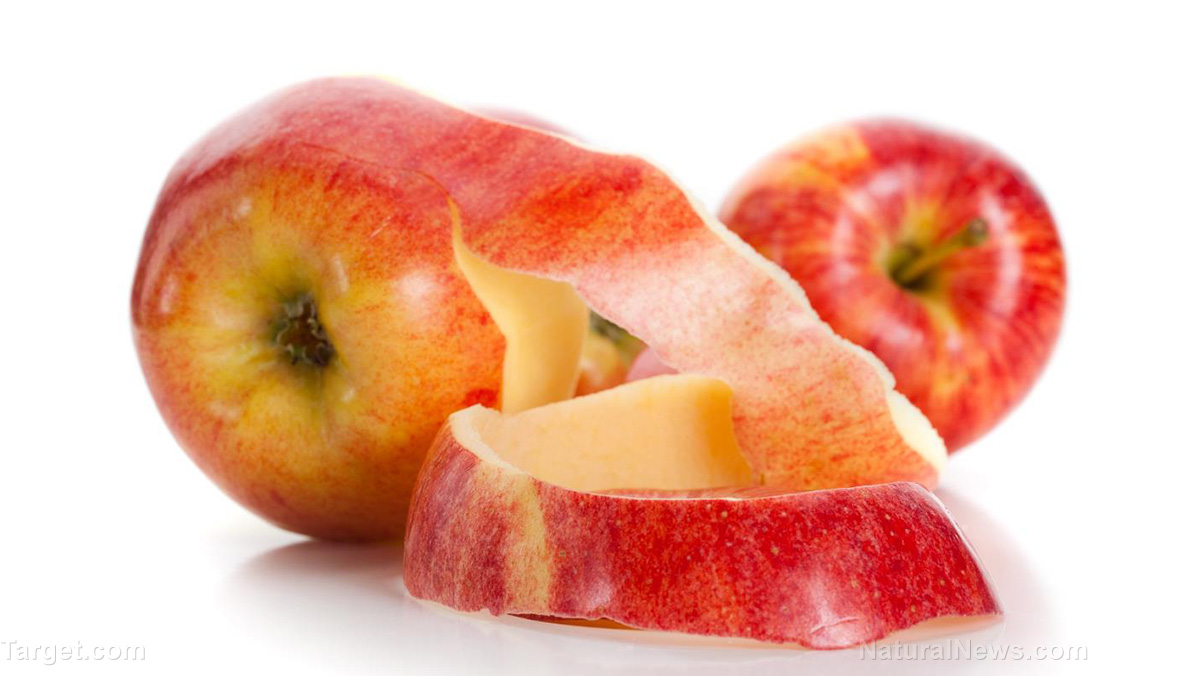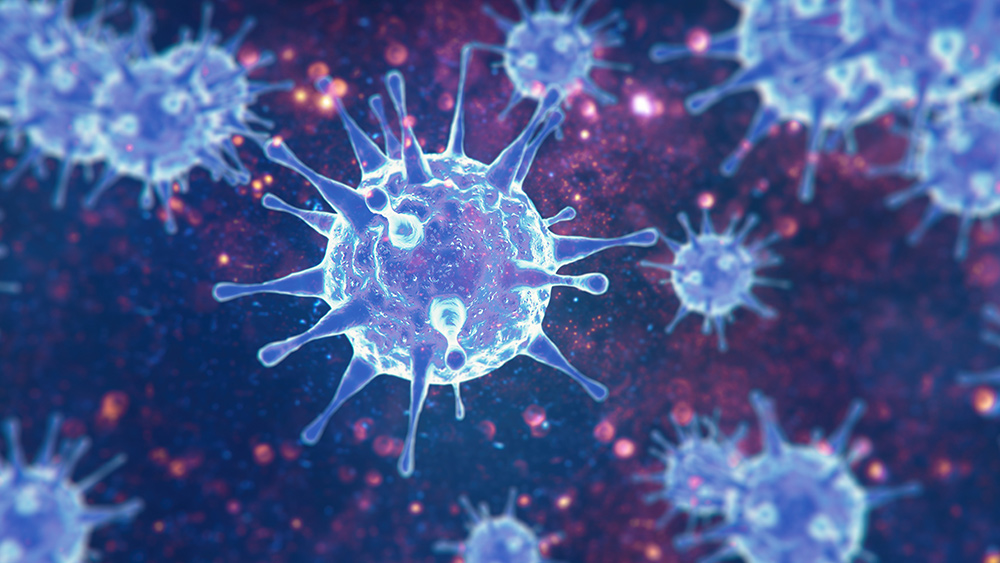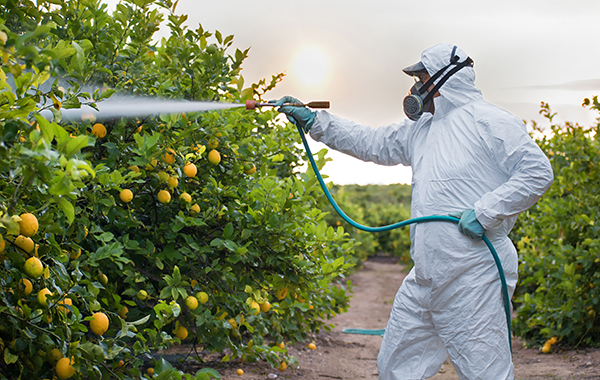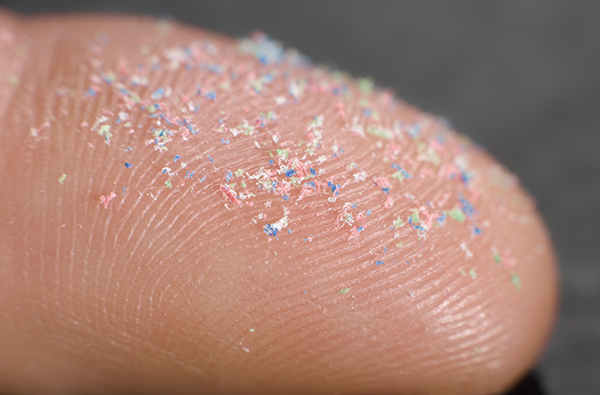Common pesticides CANNOT be washed off your fruit – these chemicals penetrate through the skin and into the pulp
08/21/2024 / By Lance D Johnson

As the public becomes more aware of the negative health effects of pesticides, herbicides and fungicides, more people are washing their produce before they eat it. However, while this practice may remove some bacteria it ultimately may prove to be useless for removing chemicals because common pesticides are absorbed through the skin of the fruit and into the pulp.
In a new study published in Nano Letters, researchers have developed a novel cellulose-based membrane that can detect the presence of pesticide chemicals on fruits, vegetables and herbs. The new food safety detection system can also determine whether the chemicals have penetrated past the skin and into the pulp. The innovative material, known as nano-wrinkled cellulose/silver nano-particle membranes (NWCM-Ag), is highly sensitive and can precisely identify trace levels of harmful substances in food.
New food safety detection method allows researchers to find pesticide residues in fruit pulp
Traditional detection methods, such as gas and liquid chromatography, are often cumbersome and expensive. Surface-enhanced Raman scattering (SERS) has emerged as a promising alternative due to its high sensitivity, but its effectiveness has been limited by the inherently weak signals in Raman spectroscopy.
The new study addresses these limitations by integrating cellulose dissolution, aligned regeneration and in situ nano-particle synthesis to create a flexible, transparent and highly sensitive membrane. The NWCM-Ag membranes utilize a three-dimensional nano-wrinkled structure, which enhances the electromagnetic coupling of metal nanoparticles on the membrane surface. This design allows for the detection of pesticides at concentrations as low as 10^-9 M. The researchers focused on two pesticides in this study: thiram and carbendazim. Both are widely used fungicides used on food crops. The primary focus of the study was on apples, where testing revealed that thiram and CBZ could penetrate from the peel into the pulp layer.
According to the authors of the study, “fruit-cleaning operations cannot wholly remove pesticides.”
The situation of pesticide contamination has worsened over time. Water, soil and food crops are constantly infiltrated by these carcinogens and ravaged by poor agricultural practices. The most recent pesticide data report by the USDA found detectable pesticide residues in 72% of 10,000 food samples. While the USDA contends that 99% of the foods tested do not “pose risk to consumers’ health and are safe,” the ubiquitous nature of pesticides could present health risks with cumulative exposure. A separate analysis found pesticide residues in 59 different fruit and vegetable categories. Of these categories, 20% contained pesticides residues at levels posing “significant risks.”
Apples must be completely peeled to remove the pesticides
One of the key innovations of the NWCM-Ag membrane is its ability to visualize the distribution of pesticides within food. Using Raman imaging technology, researchers demonstrated that pesticides can penetrate through the apple peel into the pulp layer, approximately 30 micrometers deep. This finding suggests that washing fruits is insufficient for removing pesticide residues. The peel of the fruit, one of the most nutrient-dense parts of the fruit, may have to be removed altogether in order to remove the pesticide residues.
The NWCM-Ag membranes not only excel in sensitivity but also in versatility. They have been successfully tested on a variety of food items, including vegetables, fruits, seafood and condiments. The membranes offer high optical transparency (91%) and flexibility, making them suitable for diverse applications and detection scenarios. The membranes demonstrated versatility by successfully detecting contaminants in a variety of foods, including: chili powder, cucumber, rice grains and shrimp.
“The development of these nano-wrinkled cellulose membranes represents a significant leap forward in food safety technology,” said Dr. Zewan Lin, the lead researcher of the study. “By enhancing the spatial and electromagnetic coupling effects, our membrane offers unparalleled detection capabilities that can be crucial for ensuring food safety.”
The study’s findings pave the way for more effective and accessible food safety measures, particularly in regions with limited resources. The ability to detect pesticide residues at ultra-low concentrations could transform food safety practices, reducing the risk of pesticide ingestion, enhancing consumer protection against carcinogens, and beckoning the need for agricultural transformation.
Sources include:
TheNewLede.org [PDF]
AMS.USDA.gov [PDF]
Submit a correction >>
Tagged Under:
This article may contain statements that reflect the opinion of the author


















